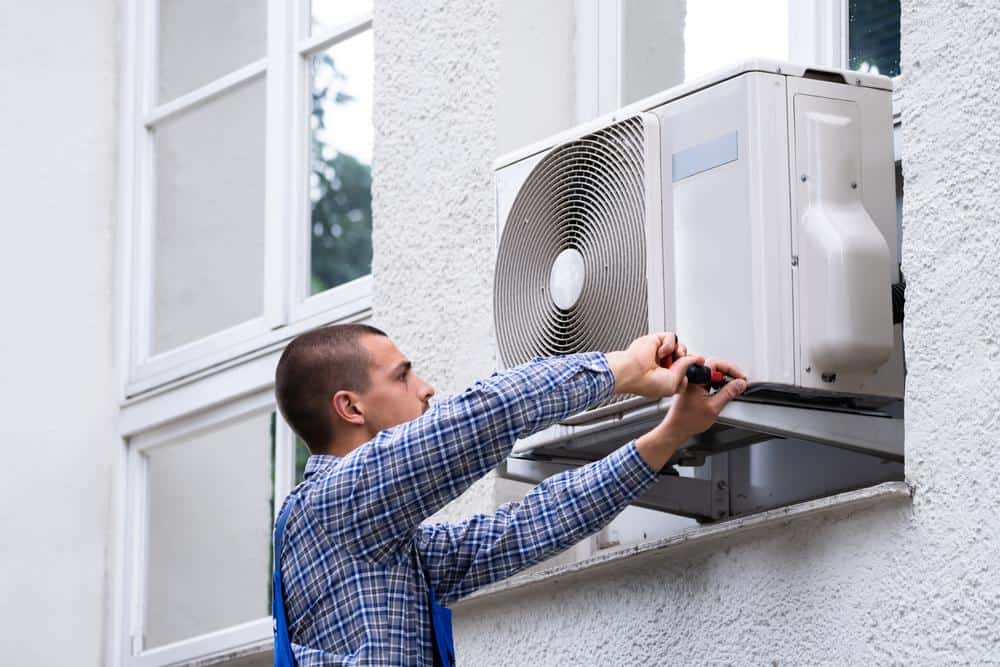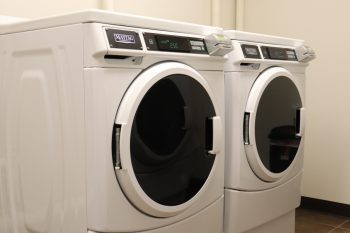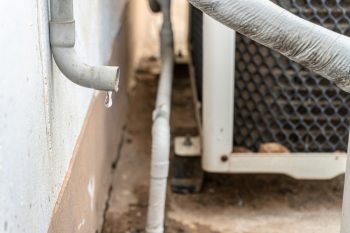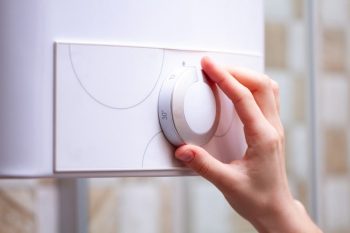
In the world of air conditioning, there’s a feature that often goes unnoticed and underutilized – the Dry Mode. As the name suggests, this mode is all about reducing moisture levels in the air. But how does it work, and when should you use it? This article covers everything you need to know about the Dry Mode on a window AC.
Dry Mode on a window AC is a feature designed to reduce excess humidity in the air. It operates at lower fan and compressor speeds to optimize dehumidification, essentially turning the air conditioner into a dehumidifier. This mode is beneficial in high humidity, cooler temperature conditions, and can lead to energy savings, a healthier home environment, and improved comfort.
Understanding Dry Mode
The Dry Mode on a window AC is specifically designed to reduce excess humidity in the air. The way it works is similar to the standard cooling mode, but with a twist. Instead of focusing on cooling the room, the air conditioner operates at lower fan and compressor speeds to optimize dehumidification.
In this mode, the air conditioner acts as a dehumidifier. It absorbs moisture from the room’s air, condenses it on the evaporator, and then releases dehumidified air back into the room. On your AC unit’s remote control, Dry Mode is usually represented by a water drop icon.
The Benefits of Using Dry Mode
Using Dry Mode on your window AC has several advantages. Here are the top benefits:
- Energy Efficiency: Since the compressor runs at a slower pace in Dry Mode, it consumes less energy compared to the Cool Mode. This can lead to significant energy savings and lower utility bills.
- Healthier Home Environment: By reducing humidity levels, Dry Mode helps maintain a healthy home environment, preventing the growth of mold and mildew.
- Improved Comfort: Lower humidity levels can make the room feel cooler than it actually is, providing a more comfortable atmosphere without the need for excessive cooling.
- Odor-Free Air: Dehumidification can help eliminate odors associated with mold, dampness, or mildew in your home.
- Prevents Damage: By controlling humidity levels, Dry Mode can help prevent damage to your home and belongings caused by excessive moisture.
When to Use Dry Mode
Dry Mode is most beneficial in situations or climates with high humidity levels and relatively cool temperatures. It’s ideal for damp and sticky conditions, such as during rainy days or in spring and fall seasons when humidity is at its peak. Using Dry Mode in these conditions can help maintain a comfortable indoor environment and improve energy efficiency.
Energy Consumption in Dry Mode
An AC unit in Dry Mode uses about 25% to 50% of the electricity compared to the cooling mode, resulting in a 50% to 75% reduction in electricity usage. However, it is important to note that the Dry Mode consumes more energy than a standalone dehumidifier. Despite this, using the Dry Mode can still be an economical and efficient choice when the outdoor temperature is not too high, and the primary concern is high humidity levels.
The Role of Dry Mode in Maintenance and Lifespan of AC Units
Using the Dry Mode in a window AC unit can contribute to its overall lifespan and maintenance. This mode is energy-efficient and helps in lowering electricity consumption, reducing wear and tear on the system, and preventing mold and mildew growth.
Wrapping Up
In conclusion, the Dry Mode in an air conditioner is an efficient and economical feature that helps maintain a comfortable and healthy indoor environment. It is most effective in moderate climate zones or when the temperature is not too hot but humidity levels are high. So, the next time you feel the air in your room is too humid, remember to switch your AC unit to Dry Mode.
Frequently Asked Questions
How do I switch my window AC unit to Dry Mode?
Most window AC units have a remote control with multiple mode options. Look for a button with a water drop or “Dry” label on it. Press this button to switch your AC unit to Dry Mode.
Can I use Dry Mode in any climate?
Yes, you can use Dry Mode in any climate. However, it is most beneficial in climates with high humidity levels and relatively cool temperatures, such as during rainy days or in spring and fall seasons when humidity is at its peak.
Will Dry Mode still cool my room?
Dry Mode is not primarily designed for cooling; its main function is to reduce humidity. However, it can make the room feel cooler because lower humidity levels can make the air feel more comfortable.
Can Dry Mode replace a dehumidifier?
An air conditioner in Dry Mode can act as a dehumidifier to an extent, but it is not as efficient as a standalone dehumidifier. If your primary concern is high humidity levels, and you don’t need the cooling function of an AC, a dehumidifier might be a better option.
Is it bad to run my AC in Dry Mode all the time?
Running your AC in Dry Mode all the time is not necessarily bad, but it may not be the most efficient use of your AC. Dry Mode is best used when the humidity levels are high, and the temperature is not too hot. If the temperature is high, using the Cool Mode may be more efficient.












